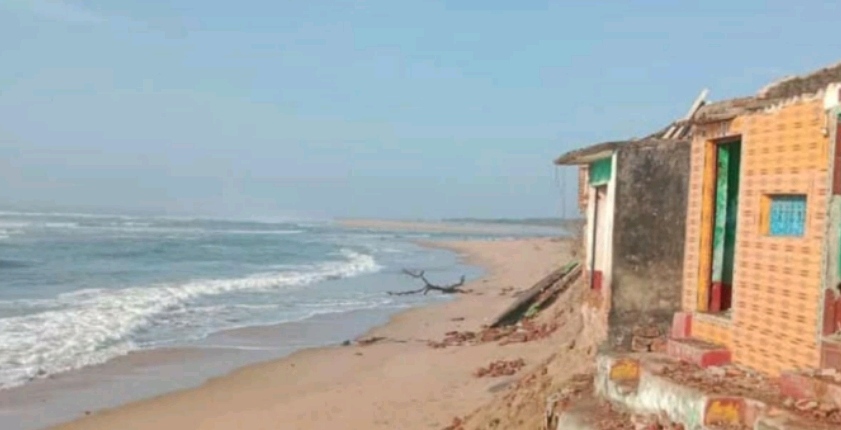Home is Where our Story Begins!!!

“Home is the safest place that protects each and every species and its family from potential threat factors.
It gives shelter and nourishment to the living being, rejuvenate its soul to fight the struggle of life.
The prominent aspect of home is that, it is the safest heaven for the offspring that allows the posterity to grow healthy as an adult.
The nourishing and nurturing aspects of home always acts as a pulling agent for the adult to give birth their babies in the comfort zone on the earth that they were once borne.
The mother, the bearer of the children prefers to come up with the progenies in their native place with the conviction that the factors that were once was taking good care of them in their childhood days would extend the same support to these spawns,” This was narrated by my social science teacher in a class, clarifying the concept of home, during the upper primary school days.
In his explanation of home, he added the fact that “everybody loves their shelter and during the critical phase of life they long to go back to home”.
After so many years, all of a sudden, my social science teacher’s statement regarding home erupted in my mind when I was standing in the Podampeta beach to witness the mass nesting of Olive Ridley sea turtles, in Ganjam Districts of Odisha.
The sudden flashback of yesteryear’s classroom lessons happened while listening to the facts shared by the popular “Turtle Man of Odisha” Rabi, on the behaviors of these cute sea turtles, who do epic migration in the sea to mate and lay their eggs on the same beach where they were borne.
We were witnessing the magnificent view of thousands of turtles floating in the sea water, many crawling ashore with their heavy steps taking brief pause and searching the safest place.
Then they dig body pit with their front flippers for hours, scooping out the sand using their hind flippers creating a conical cavity, lay the eggs in the hole that vary in numbers from 110 to 150 at a time, covering up the nest then camouflage the nest by covering a big area with the sand to hide the nest and finally say good bye to the beach heading towards the sea.
This whole process of laying eggs expanded over couple of hours seemed to be cumbersome, exhaustive and worn-out affaire as the mother turtle were heard sighing while moving with as many numbers of eggs in their belly, gasping loudly for air while digging hole in the beach and laying eggs.
The drained-out mother after covering the nest with the sand when heading towards the brine could be seen feeble and weak.
They were taking as many long minutes pause before reaching the salt water immersing, completely submerging and dissipate themselves in the current of the marine world.
We were experiencing this beautiful arrangement of Mother Nature where the Olive Ridley Turtles lay their eggs on the shoreline of Rishikulya River mouth and vanish into ocean world then Rabi said something that raised my curiosity.
He said that the baby turtles will come out after 45 to 50 days from this rookery and some of them will visit again this place when they become mature enough to lay their own eggs.
It is the female turtle that come ashore and lay their eggs while male turtle rarely pays a visit.
This was interesting and mysterious to my ear as it was a known fact that the sea turtle spent their entire life beneath the sea water.
Comprehending my astonishment and amusement from my facial expression, a marine scientist, who by chance was attending the mass nesting site at the same time with us shared that these turtles are great navigator.
They can sense the invisible lines of magnetic field of the earth and return to that place where they were borne and touched the sea water first.
This revelation instantaneously flashed back my memory of the yesteryears in the early school days.
Simultaneously my inner inquisitiveness wanted to know that even though the world has so many beaches, then why do these turtles make an arduous journey covering so many thousands of kilometers to reach this part of coast line? The scientist once again could read the question from my face and answered showing a grin in his face that the turtles choose this place to lay their eggs because of the natural volatility and fragility of the beach.
The Bay of Bengal dominantly erases the beach in some part of the coastline while creating a new beach along the river mouth of Rishikulya, in every alternative year.
This natural phenomenon creates loose sand in these beaches helping the turtle to dig holes and put their eggs inside covering it with easygoing and flexible sands that keep the eggs safe from predators and provides the warmth to form life inside the coverage of egg shell.
Affirming to the marine scientist comments, Ravi, the “Turtle Man” added that “the Bay of Bengal is the dominating force in this part of the world, every time alternating the landscape of the beach.
In recent years it has become although more violent and aggressively engulfing the human habitation. One third of our village, consisting of two hundred houses, is now submerged under water; the rest of the village is waiting its turn to be vanished inside the blue brine.
We understand the pain of losing homes, so we are concerned about the safety and security of these marine creatures that depends on our part of coastline to grow their lineage.
Our community volunteers create safe passage for these animals by auto banning fishing activities during the season of mating and nesting of sea turtles.
We do protect the eggs in our beach from the potential predators for the whole duration.
We have created alternative livelihood arrangements for this off-season period and get delighted to see more and more turtles are coming each successive year that signifies that our conservation and protection work is bearing fruits in making increasing number of turtles completing their life cycles”.
Listening to the turtle man, it made a rush of ecstatic feeling within me, as I know the significance of Olive Ridley Sea Turtle in marine ecology.
Simultaneously, a sense of gratitude was felt within, as I could see the great effort that these community volunteers are putting in to protect and safeguard the marine scavengers despite their own struggle for protection of their habitation from the encroachment of sea.












































